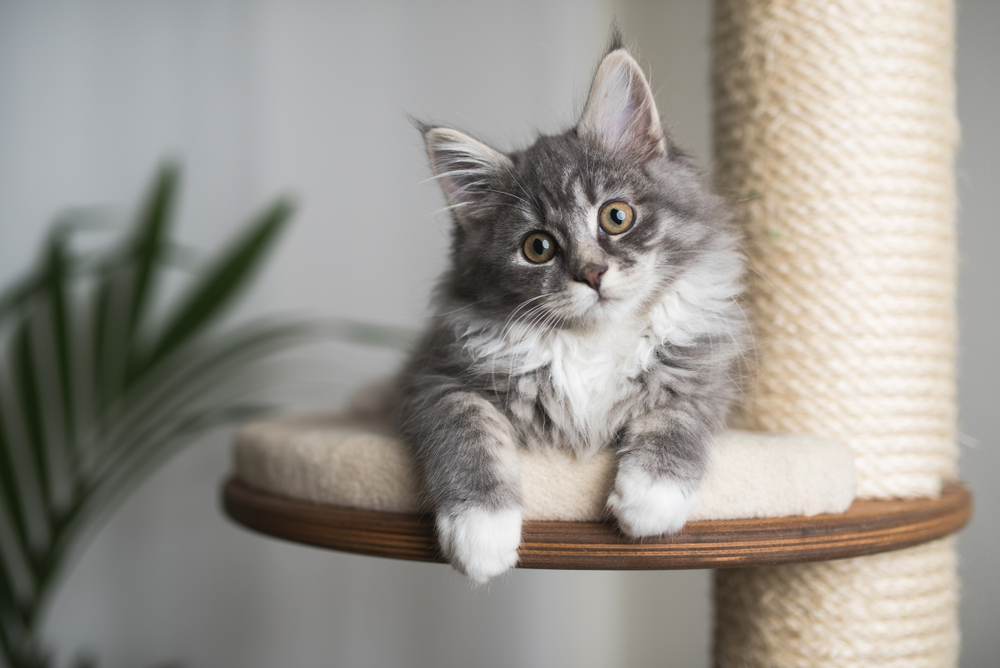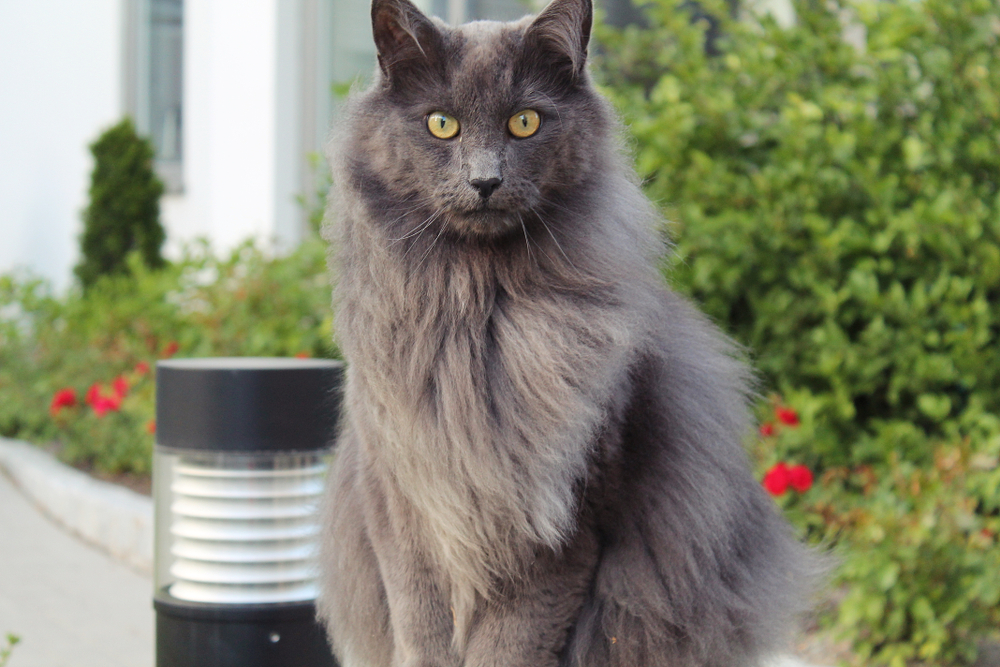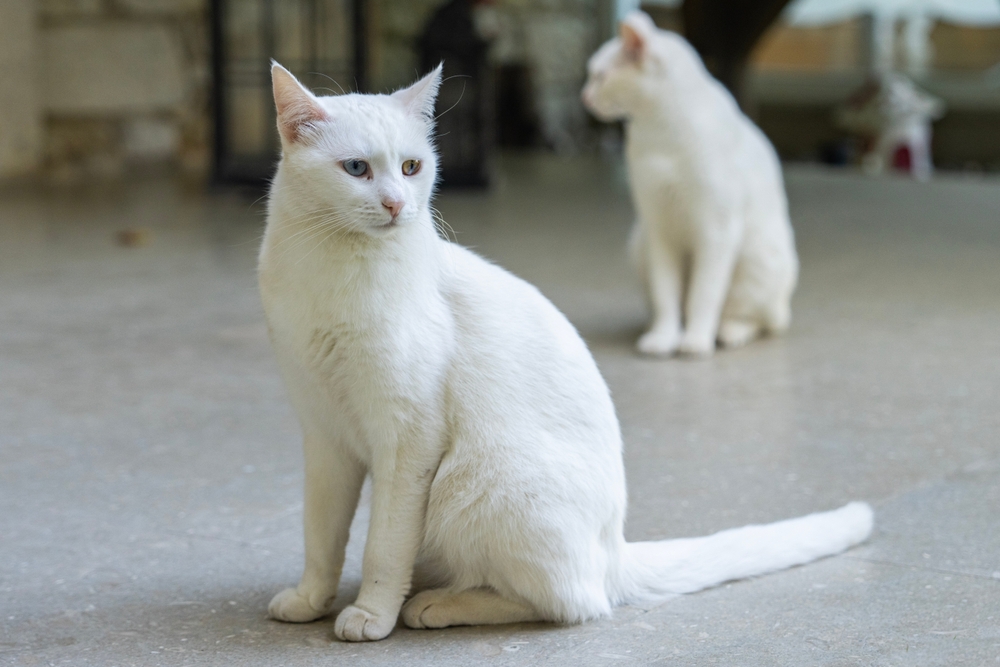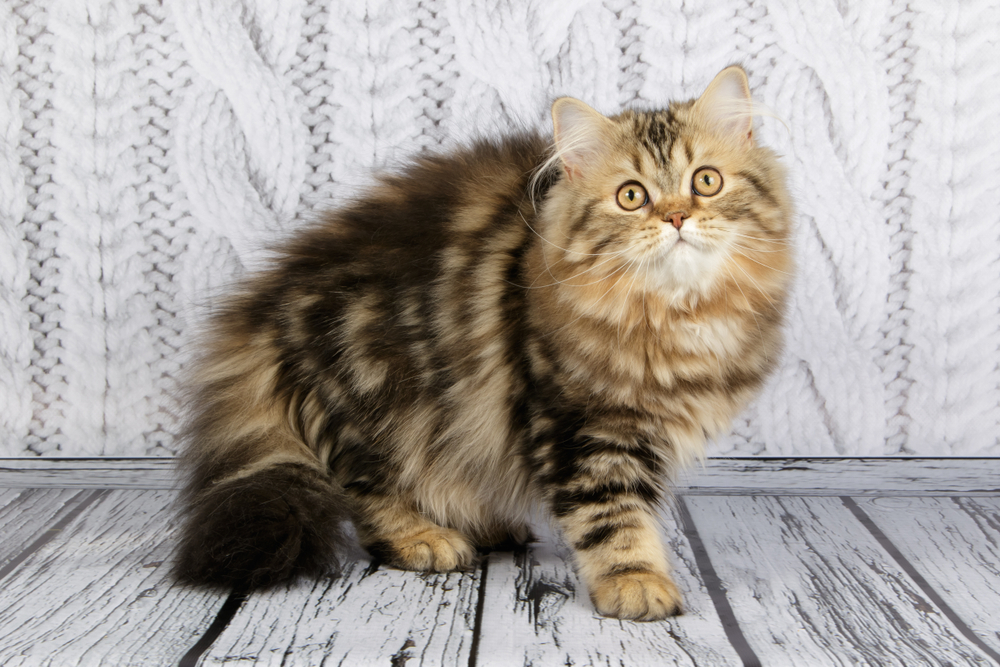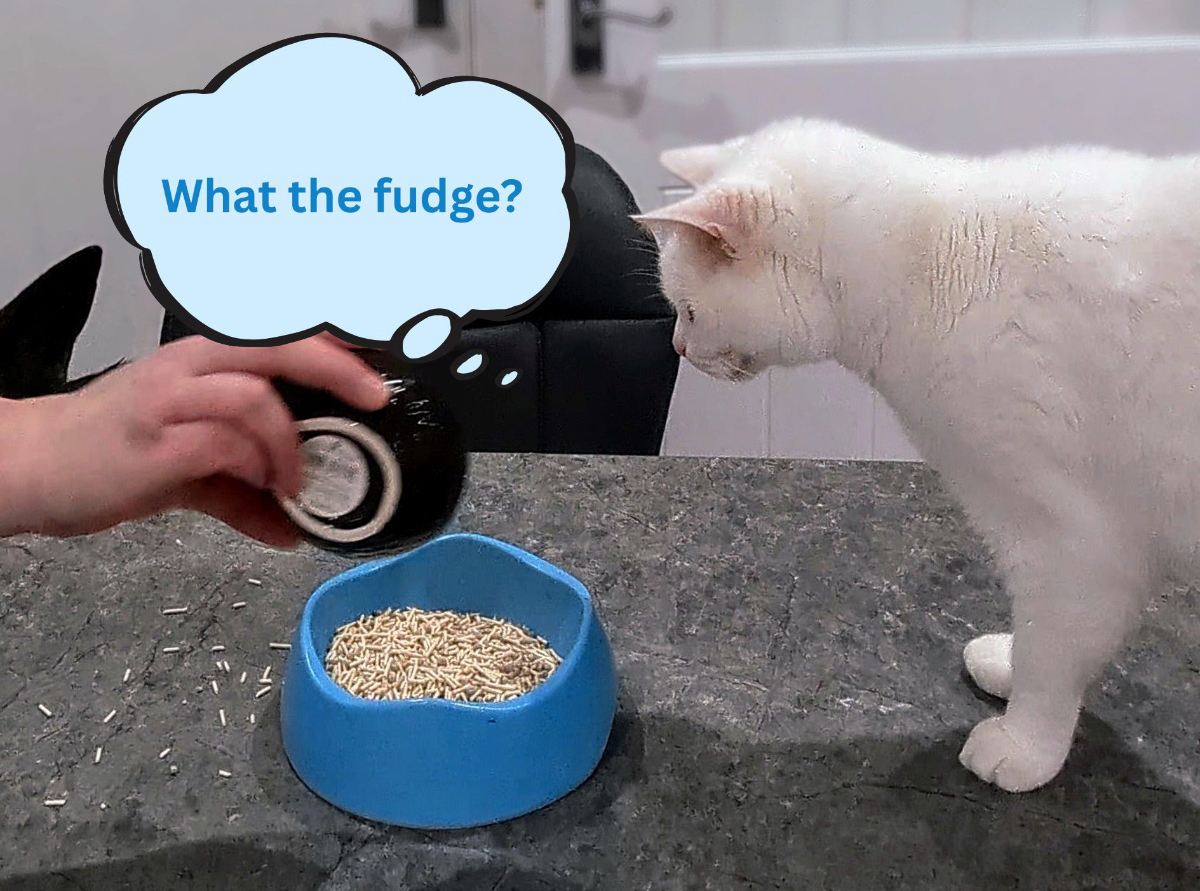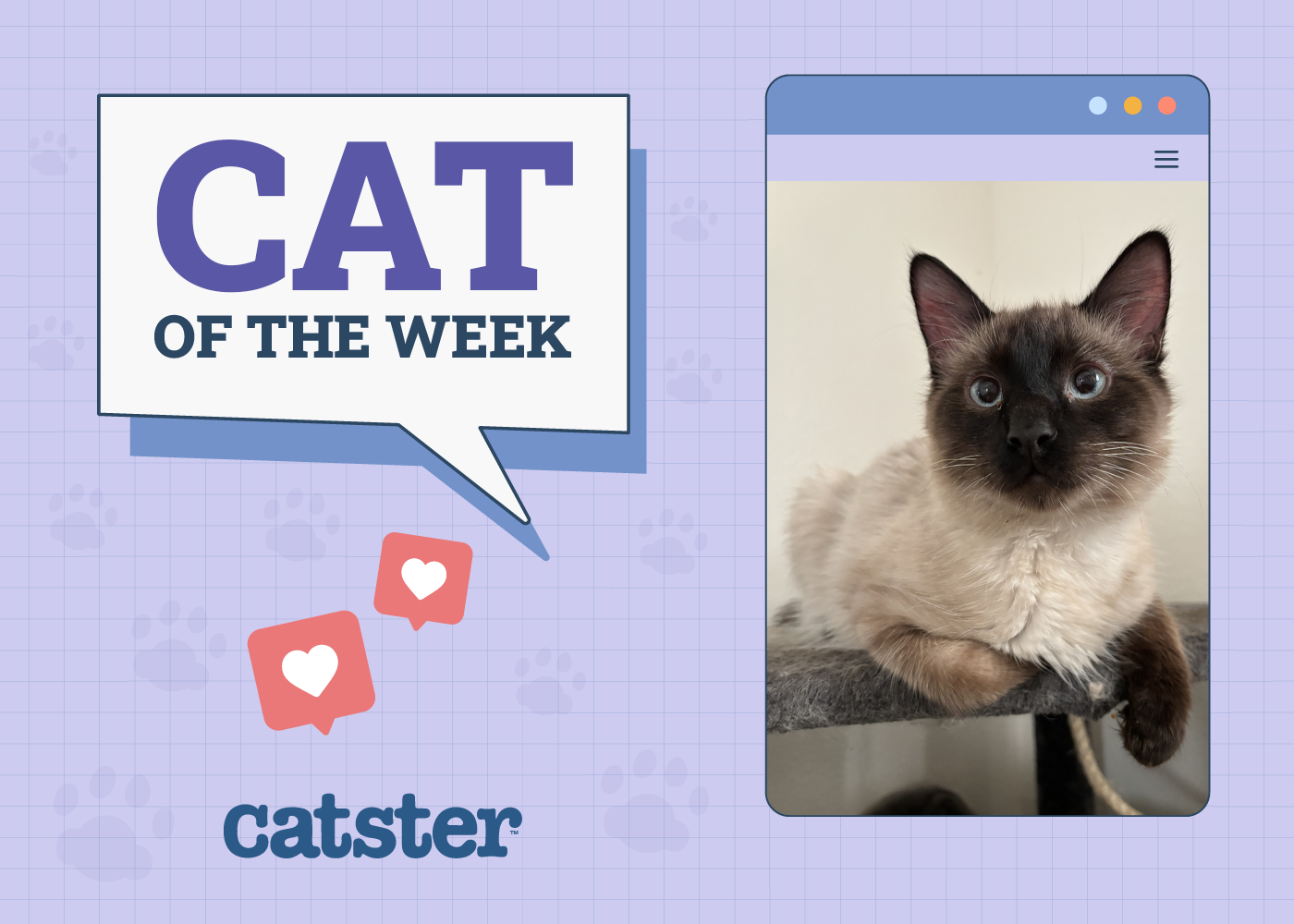Click to Skip Ahead
If you’ve ever seen a Maine Coon in person, they probably took your breath away. They are massive, gorgeously stunning creatures. It is no wonder that you’re attracted to them, but the blue color is spectacular! If you have just witnessed one for the first time, you probably want to learn all you can about this feline. Here are all the details you need to know about this lovely blue Maine Coon.
Breed Overview
Height:
10–16 inches
Weight:
10–25 + pounds
Lifespan:
10–15 years
Colors:
Blue, but also a wide range of other colors
Suitable for:
Virtually any cat-loving home
Temperament:
Docile, gentle, adaptable
The blue color in the Maine Coon is a diluted gene that produces a smoky lavender-gray color. Against their penetrating pair of eyes, you can imagine how the contrast can make the coat truly pop. Maine Coons can have solid-blue coats or patterned coats with various shades of blue, such as the blue tabby, blue-silver tabby, blue patched tabby, shell blue-cream, shaded blue-cream, blue-smoke, and blue-cream smoke. Regardless of their coat colors, Maine Coons are intelligent, loving felines that make remarkable pets.
Blue Maine Coon Characteristics

The Earliest Records of Blue Maine Coon in History
Maine Coons were said to have originated in the mid-19th century. You may be able to tell by the name alone that the Maine Coon originated in the state of Maine. These hardy cats were capable of withstanding even the most frigid temperatures of Maine winters.
Maine Coons not only survived but thrived, proving to be versatile and adaptable animals. They are a naturally occurring breed that developed without human interference. The creation of the Maine Coon was a spontaneous one. Researchers seem to believe that the Maine Coon originated from long-haired Angoras that came overseas with travelers and mated with domestic cats in Maine.
Because of their size, it has often been rumored that Maine Coons are mixed with a wildcat. Because of their pointy ears, size, and markings, they greatly resemble the North American bobcat. It has been long since rumored that the Maine Coon has true bobcat DNA.
Researchers definitively disagree with this theory, but it’s amusing to consider that the massive beasts had wild lineage to match their rugged appearance.
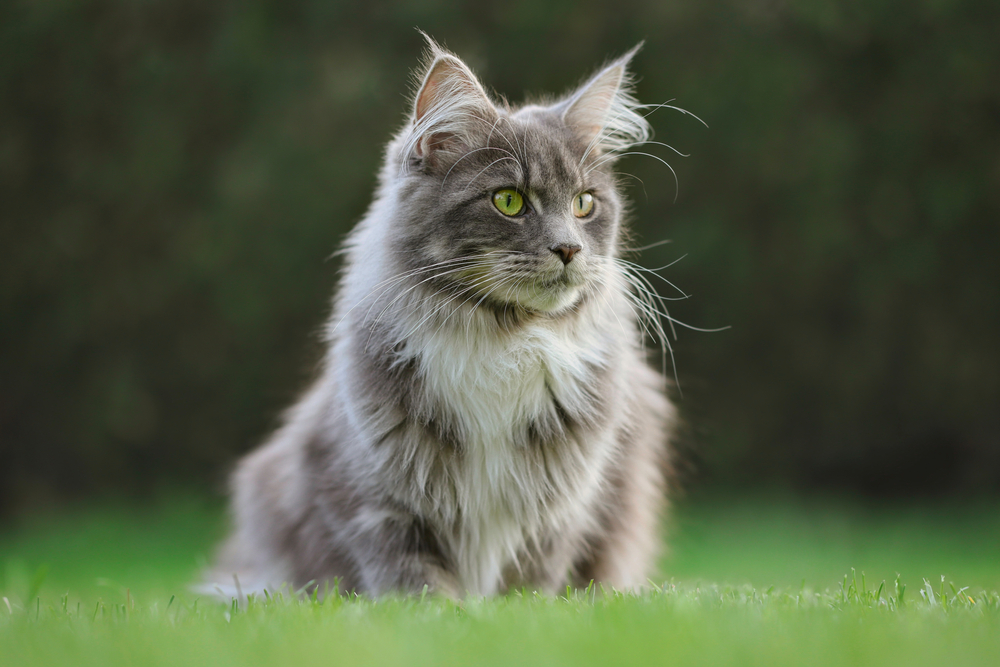
How Blue Maine Coon Gained Popularity
How could you look at a beautiful blue Maine Coon and not think they would be the most popular pick around? These stunning animals are one of a kind, with large bodies, tufted ears, and a presence that beats all others.
It is no wonder that Maine Coon cats are incredibly popular today. People are attracted to their robust size, calm demeanor, and overall presence. The Maine Coon is an incredibly hardy cat, which means they adapt to many types of environments. This helps the breed thrive and eliminates a lot of potential issues.
Formal Recognition of Blue Maine Coons
The American Cat Breeders Association recognized the Maine Coon cat breed in 1976. On the other hand, the Cat Fanciers’ Association informally recognized the Maine Coon in 1975 and then officially recognized them in 1976. Blue is one of the many recognized colors of Maine Coons according to the breed standard.
Since then, the breed standards have grown tremendously, creating the overall visual of the ideal Maine Coon we know and love today. There are breeders across the United States and even in some other parts of the world. They are a favorite for many reasons, and it is no wonder these associations took an interest in this self-developed breed.
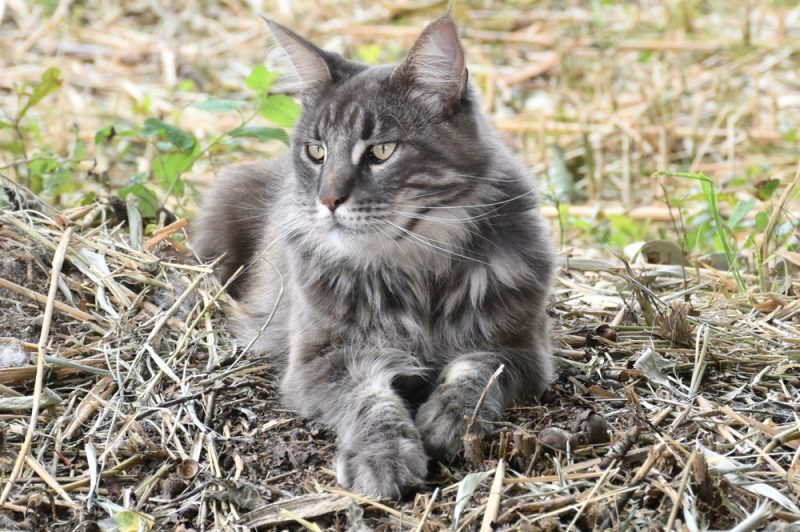

The Top 6 Unique Facts About Maine Coons
So, what would you like most about Maine Coons? Let’s find out.
1. Maine Coons Hold a Record for Being the Longest Cat in the World
We already know that Maine Coons are massive felines. An adult Maine Coon can weigh over 25 pounds. On top of that, however, they have received awards for being the longest-domesticated cats in the world.
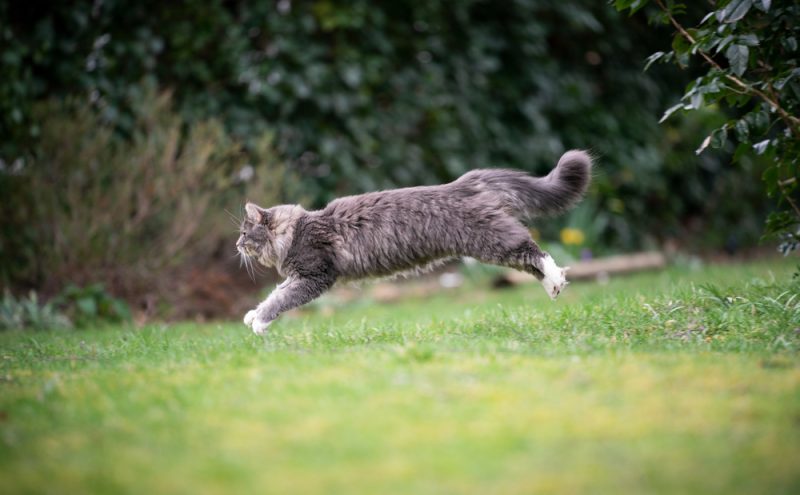
2. Maine Coons Are Widely Revered as Gentle Giants
They are widely known for their incredibly gentle demeanors. Maine Coons are exceptional animals, and some consider them the Newfoundland dogs of the cat world.
3. A Maine Coon Has a Waterproof Coat
One really interesting thing about a Maine Coon is that they have a waterproof coat. This feature protects them from inclement weather. Since they were developed to withstand the frigid environments of Maine winters, their coat helps them adapt accordingly.
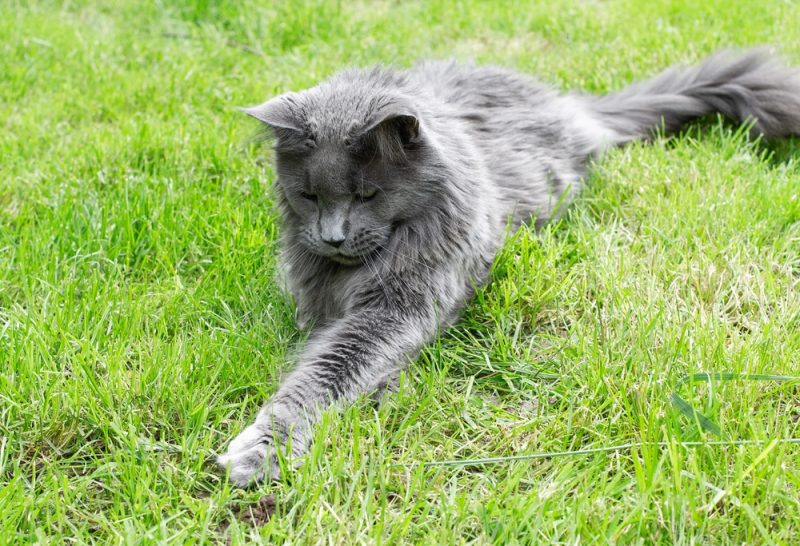
4. Most Maine Coons Have Interesting Paws
Most Maine Coon cats are polydactyl, meaning they have extra toes.
5. There Are Over 75 Colors of Maine Coon Cat
When it comes to a Maine Coon, blue is certainly not the only variety. There are over 75 colors and patterns that exist in the Maine Coon breed alone.
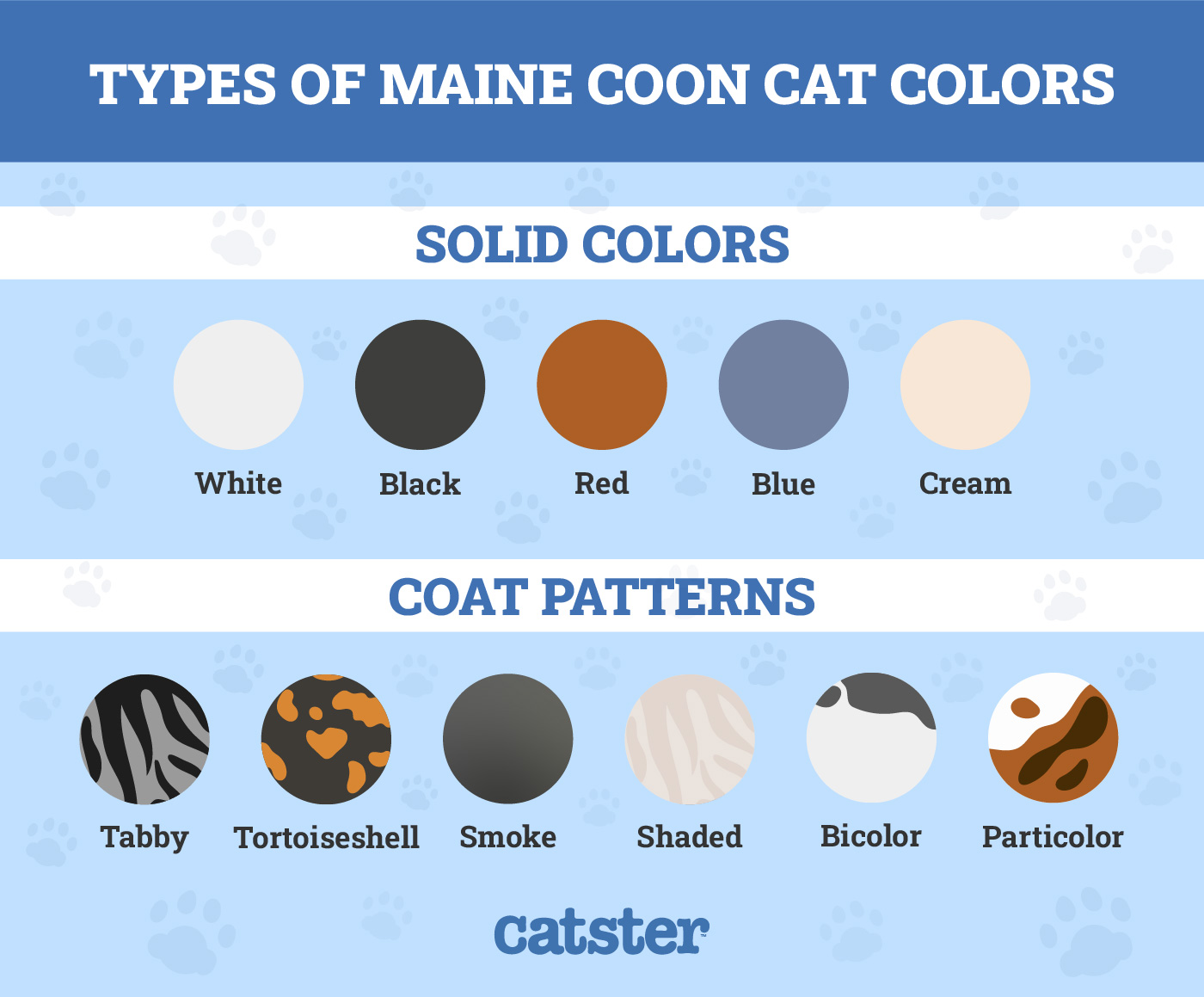
6. Maine Coons Take a Long Time to Mature
What is interesting about Maine Coons is that they take longer to mature than any other feline. A Maine Coon does not completely fully develop until they are at least 3 to 5 years of age. After the first year of life, growth does slow down significantly, but it continues to add length and weight over time.

Does a Blue Maine Coon Make a Good Pet?
A blue Maine Coon, or any Maine Coon, for that matter, would make a tremendous pet for virtually any lifestyle. They are highly adaptable and agreeable in almost any setting. They can easily make friends with children, seniors, folks with disabilities, other cats, and even dogs!
Granted, you should never leave your Maine Coon alone around your gerbil because they are skilled predators. But these cats fit the mold perfectly when it comes to your average everyday household.
Something to consider is that the Maine Coon does have an overabundance of hair. This can cause an uptick in shedding, which can irritate those with mild allergies. So, even if you’re highly attracted to the breed, it might be challenging to live with a Maine Coon if you suffer from cat allergies.
A Maine Coon is an adventurer and loves exploring the outdoors. So, if you thought about getting a cat you’re able to leash-train, they are ideal. Their protective coats also keep them insulated in extreme temperatures. We never recommend keeping your cat outdoors full-time.
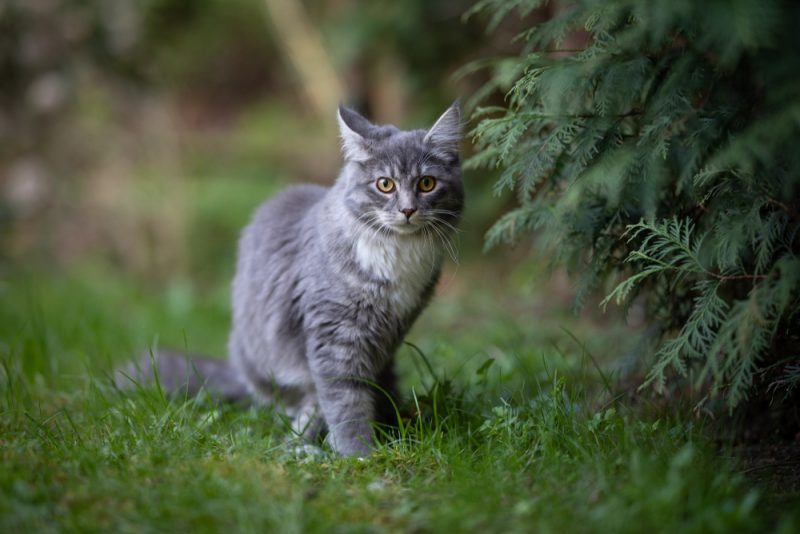

Conclusion
Now you know a little bit more about the Maine Coon breed. The blue color is stunning, and several coat patterns with blue shades are available. However, the Maine coon is an exceptional feline, regardless of their coat color. If the Maine Coon sounds like a cat that’s right up your alley, you can look for local breeders in your area.
Keep in mind that rescues and shelters also get purebred cats or mixes thereof. You can always check in to see if there’s a beautiful blue kitty in a rescue center or shelter near you. Whether you adopt your cat from a shelter or breeder, we’re confident you’ll love having a Maine Coone in your home for several years.
See also:
Featured Image Credit: Nils Jacobi, Shutterstock

